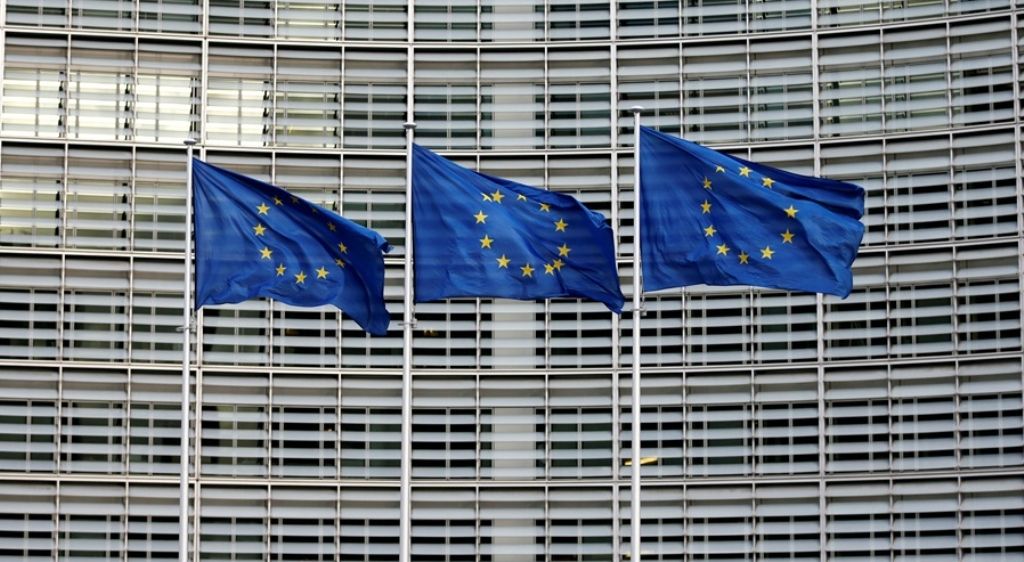EU Increasing Its Commitment to the Protection of Cultural Heritage in Conflicts
In June, the Council of the EU endorsed the “Concept on Cultural Heritage in Conflicts and Crises”, developed by the European External Action Service (EEAS). It sets specific political goals for the Union to strengthen its soft power and contribute to building lasting peace in conflict-affected areas. However, its implementation will require coherence in the Union’s external action as well as the adoption of specific guidelines for the protection of cultural heritage during EU civilian missions and operations.

Cultural heritage, both tangible and intangible, often becomes the target of attacks by extremists who want to erase the memory of common history and weaken the identity of local communities. The looting of cultural goods is in turn used to finance criminal and terrorist activities. The devastation of historical Buddha statues in Afghanistan in 2001 and the raiding of tombs in Mali in 2012 or the ancient city of Palmyra in Syria in 2015, among others, testify to this. Similar incidents also took place during the Balkan wars in the 1990s.
The EU is committed to ensuring security in Europe, Africa, and the Middle East through 11 civilian and 7 military missions or operations. Until now, however, tasks related to the protection of cultural heritage and the fight against the illicit trafficking of cultural goods have been carried out only as part of the mission in Iraq. Therefore, in April the EEAS developed the “Concept on Cultural Heritage in Conflicts and Crises”, outlining an approach and opportunities for the EU to be involved in protection of such heritage. In June, the Council of the EU adopted conclusions on this matter, reaffirming the importance of protecting cultural heritage in the Union’s external action. It also pointed to the special role of cultural heritage protection for the stability and reconstruction of conflict-affected areas.
A New Initiative to Protect Cultural Heritage
The concept’s main assumptions are not only the physical protection of cultural goods in the event of an armed conflict but also the restoration of a peaceful existence and understanding between communities based on common history. Its advantages are a key role of social and economic needs and the emphasis on appropriate adjustment of international aid by taking into account local needs. As attacks on cultural heritage are often combined with attacks on human rights and dignity, including the most vulnerable groups, the concept is inclusive, aiming, among others, to empower women, youth, and people with disabilities. Importantly, it also takes into account the impact of climate change on cultural and natural heritage.
The concept shows the potential of the EU’s involvement in the protection of cultural heritage in three conflict stages. As a preventive measure, the Union can support local communities in developing cultural policies, educational programmes (including the fight against disinformation), inventories of cultural goods and databases, as well as threat analyses. At the crisis-response stage, it can offer support for the protection of endangered cultural goods by the establishment of safe havens or advising on the possibilities to physically secure them on the spot, as well as promote dialogue and mediation to build trust between the parties in conflict, while engaging in the fight against illicit trafficking and trade of cultural goods. As part of the conflict-recovery process, the EU can help in the reconstruction of cultural heritage, both with regard to tangible goods as well as the economic, social, and environmental needs of local communities based on international standards (e.g., Warsaw Recommendation on Recovery and Reconstruction of Cultural Heritage of 2018, or the PATH tool prepared in 2021 by the International Centre for the Study of the Preservation and Restoration of Cultural Property to evaluate cultural heritage reconstruction projects after crises). The EU can also offer support for intercultural and interfaith dialogue and conduct educational projects towards reconciliation.
The implementation of these projects is to be supported by both new and established instruments. These actions are, above all, under the Union’s Common Foreign and Security Policy, financed mainly from the budget for civilian missions and operations. The Neighbourhood, Development and International Cooperation Instrument will also be used, with €79.5 billion allocated for years 2021–2027. However, the most important step will be the quick establishment of an informal task force for cultural heritage in conflicts and crises that will allow coordination of actions at different EU levels. It will be led by the EEAS and will engage designated entities from the service and the European Commission.
International Cooperation
The concept on cultural heritage protection covers tangible, intangible, and digital goods in a conflict and also indicates the protection of cultural goods as part of the responsibility to protect. It highlights the dangers of using arguments relating to cultural heritage to divide and persecute people, for example, on the basis of religion, language, or ethnic origin, linking heritage protection to cultural rights. In this way, it extends the standards guaranteed at the international level by the Hague Convention for the Protection of Cultural Property in the Event of Armed Conflict of 1954 and its Second Protocol of 1999, as well as the two UNESCO conventions on the protection of cultural and natural heritage of 1972 and the safeguarding of intangible cultural heritage of 2003.
The Union underlines the importance that the protection of cultural heritage at the local level has for the global coordination of such efforts. To this end, the EU cooperates with the United Nations, the UN Educational, Scientific and Cultural Organization (UNESCO) and the UN Office on Drugs and Crime, as well as regional and local organisations, including NATO, the OSCE, the Arab League, the African Union, and ASEAN—cooperation that favours the exchange of experience and allows tailoring assistance better.
The EU’s involvement is often also a substantial component of international efforts to protect cultural heritage. So far, however, the Union has not used the full potential of its external action, relying mainly on the experiences of other organisations. Examples of such cooperation are seen in two large projects that it carries out with UNESCO. The first one promotes social cohesion and reconciliation in Iraq by restoring and reconstructing the historic parts of Basra and Mosul (destroyed as a result of ISIS’s actions). In the years 2019–2022, the EU allocated €20 million for this purpose. The second aims to improve social cohesion by creating jobs in restoration and preservation of cultural heritage for young Yemenis living in cities. For the years 2018-2021, the EU allocated €9.8 million to this project.
Conclusions and Challenges
The implementation of the new concept will increase the EU’s commitment to the protection of cultural heritage during conflicts and crises and overcome the greatest obstacle so far, which has been the lack of uniform standards in this area. The concept also will be an important point of reference for the EU Member States, only some of which are party to the most important acts of international law on the protection of cultural heritage. The EU’s efforts to date, such as regulations on the import and export of cultural goods (including special regulations for Iraq and Syria), were assessed positively.
In the near future, the EU should focus on implementing the concept’s assumptions in sectoral policies, for example, in the area of combating organised crime and financing of terrorist activities. To prevent illicit trafficking and trade of cultural goods more effectively, the EU should, among others, develop guidelines and training for customs, border, and police services, and provide them with control equipment and access to databases. Closer cooperation with Interpol would also be helpful in this respect. In addition, the EU should develop guidelines for the protection of cultural heritage in civilian missions and operations run under the Common Security and Defence Policy. Specific recommendations for capacity-building and training programmes would increase the effectiveness of international activities.
Poland traditionally supports the protection of cultural goods and heritage due to its history. It also has extensive experience in this area, including from work during the missions in Iraq and Afghanistan (2003-2012) or trainings for experts from Ukraine and the Eastern Partnership countries (2014-2015), which could be used by engaging in the development of guidelines for Union missions. Support in the implementation of the concept can be provided by the activity of the International Centre for Training and Research on Culture Heritage in Danger. Established by Poland last year, the centre aims to train civilian and military personnel involved in the protection of cultural heritage during armed conflicts.


